Cacti have always fascinated me with their unique beauty and resilience.
As a gardening enthusiast who loves experimenting with various plants, I’ve found cacti to be a particularly rewarding choice. Their striking forms and ability to thrive in less-than-ideal conditions make them perfect for both novice and experienced gardeners.
In this article, I’ll share some of the benefits of growing cacti and introduce a few of my favorite varieties.
Benefits of Growing a Cactus Plant
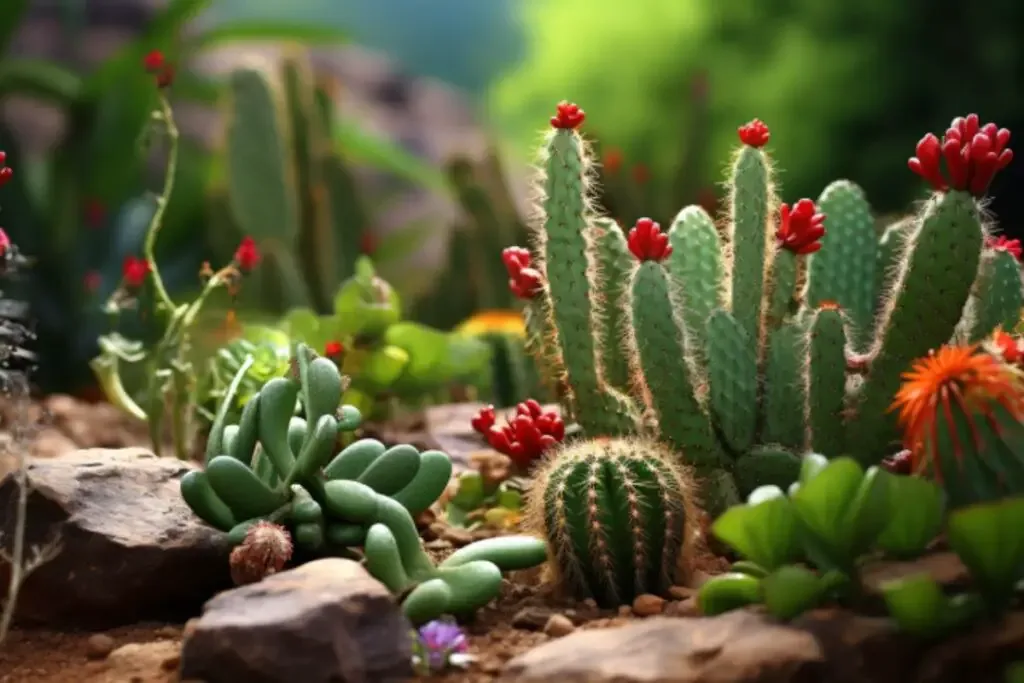
1. Low Maintenance
One of the biggest advantages of cacti is their low-maintenance nature. They require minimal watering, making them ideal for busy individuals or those who travel frequently. Cacti are drougt-tolerant and can survive in conditions where many other plants would struggle.
2. Air Purification
Like many plants, cacti can help purify the air in your home. They absorb carbon dioxide at night and release oxygen, contributing to a healthier indoor environment. This makes them not just beautiful to look at, but also beneficial for your wellbeing.
3. Therapeutic Qualities
There’s something inherently calming about the presence of cacti. Their unique shapes and slow growth can be meditative to observe. They’re often used in therapy for stress reduction, bringing a sense of peace and tranquility to any space.
My Favorite Cacti Varieties
When it comes to selecting cacti for my garden, I’m like a kid in a candy store. The diversity of shapes, sizes, and colors is truly astonishing.
Here, I’ll introduce you to three varieties that have a special place in my heart and garden.
1. Saguaro (Carnegiea gigantea)
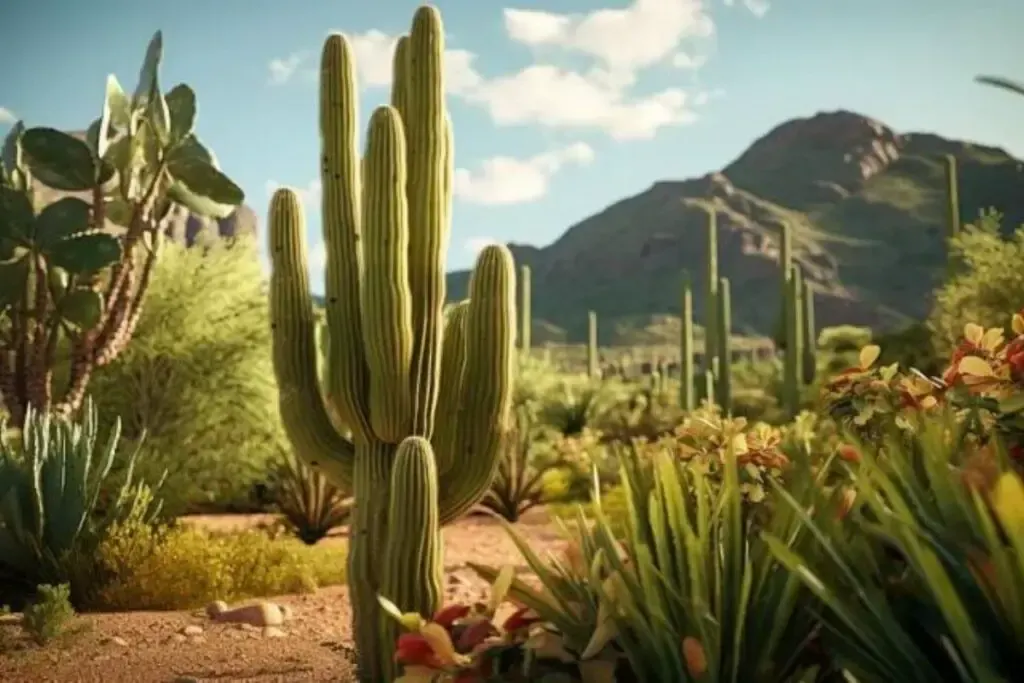
The iconic Saguaro is more than just a symbol of the American Southwest; it’s a towering wonder that can live for over 200 years. I’m particularly fascinated by its massive size and the way it becomes a habitat for desert wildlife.
2. Golden Barrel (Echinocactus grusonii)
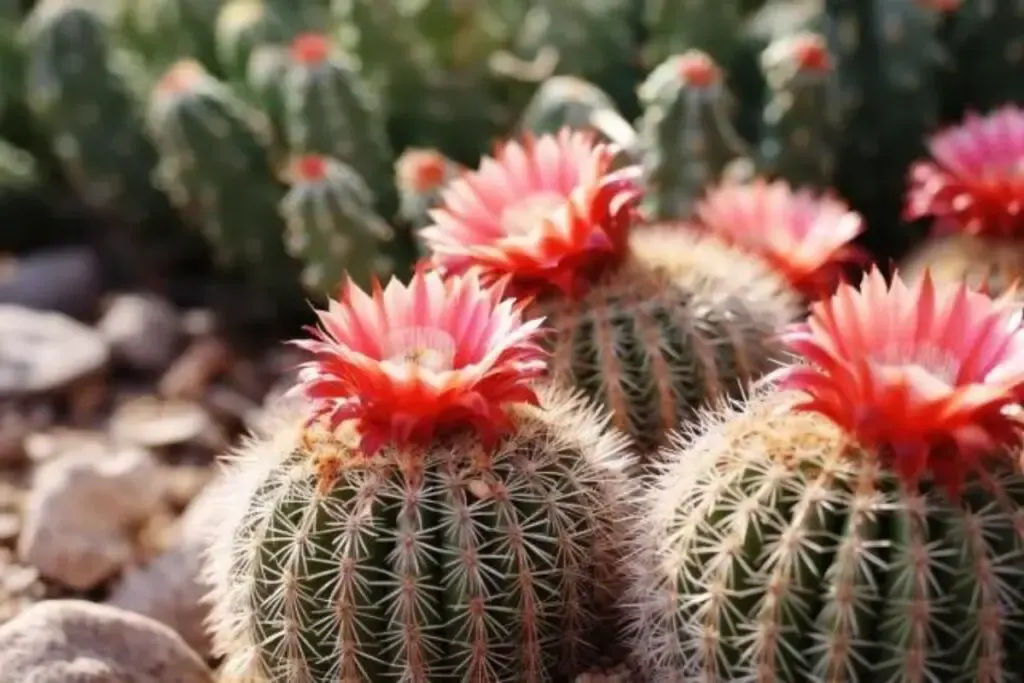
This globe-shaped cactus is a popular choice for its striking appearance. The Golden Barrel’s bright yellow spines and spherical form create a stunning visual impact. It’s a slow grower but absolutely worth the wait.
3. Christmas Cactus (Schlumbergera)
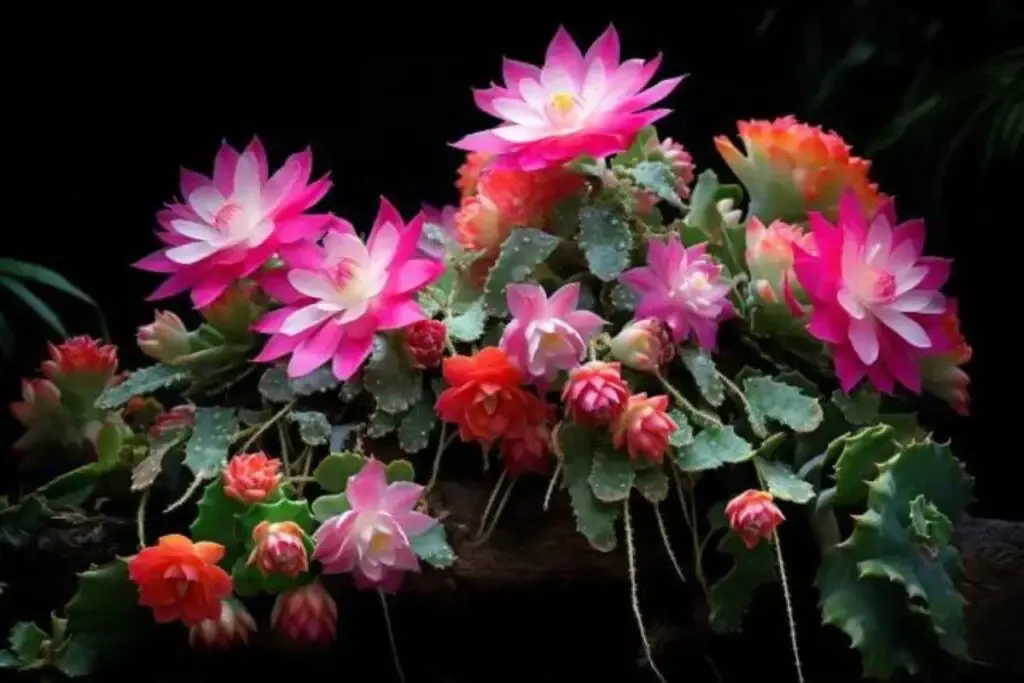
Breaking the stereotype of the spiky cactus, the Christmas Cactus boasts beautiful, cascading flowers. It’s a delightful plant to have around, especially when it blooms around the holiday season, bringing color and joy to any room.
Cactus Plant Care
Caring for cacti can be incredibly satisfying, especially when you understand their needs. Despite their hardy reputation, they do require some specific care to thrive.
Here, I’ll walk you through the essentials of cactus care, focusing on soil, watering, light, and other key aspects.
Planting
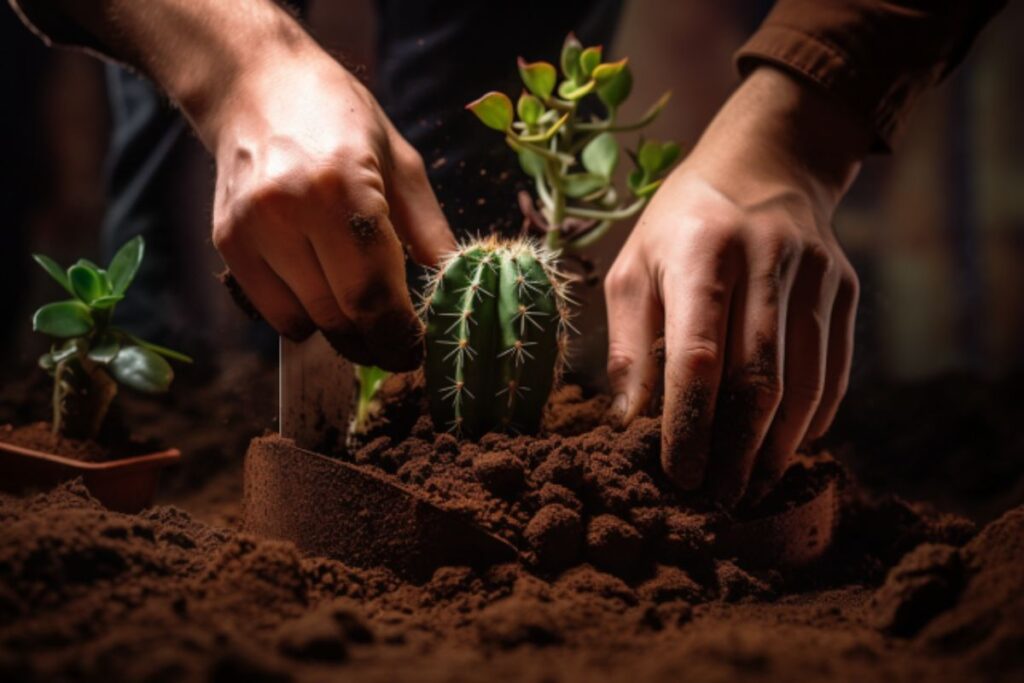
Planting a cactus is an exciting process, and doing it correctly can greatly impact the health and growth of your plant. Here are some key steps and tips to ensure your cactus gets the best start:
- Choosing the Right Container: If you’re planting a cactus indoors, pick a container with drainage holes to prevent water from accumulating at the bottom. Terracotta pots are a great choice as they are porous and allow the soil to dry more evenly.
- Preparing the Soil: Use a special cactus mix or create your own by mixing regular potting soil with sand or perlite for better drainage. This mimics their natural sandy habitat and provides the right conditions for root growth.
- Planting Depth and Position: When planting your cactus, make sure the root ball is just below the soil surface. For tall or top-heavy cacti, planting them slightly deeper can provide extra stability. Ensure the cactus is upright and centered in the pot.
- First Watering: After planting, water your cactus thoroughly to settle the soil around the roots. This initial watering is important, but remember to let the soil dry out completely before the next watering.
- Acclimatizing Your Cactus: If you’ve bought a cactus that was previously living in a greenhouse or indoors, it’s important to acclimatize it to your environment. Gradually introduce it to the light conditions in your home or garden to prevent stress and sunburn.
Light
Cacti love light. Most varieties thrive in bright, indirect sunlight. If you’re growing them indoors, place them near a south-facing window for optimal light exposure. However, be cautious of too much direct sunlight, which can cause sunburn on the cactus skin, especially in hot climates.
Soil
The right soil is crucial for cacti. They need a well-draining mix, typically a blend of potting soil and sandy or gritty materials like perlite or pumice. This ensures that the roots don’t sit in moisture, which can lead to root rot.
Water
Overwatering is the most common mistake when it comes to cactus care. These plants prefer a ‘soak and dry’ method. Water them deeply, then allow the soil to completely dry out before watering again.
The frequency depends on the climate and environment – in my experience, less is often more with cacti.
Temperature and Humidity
Cacti generally thrive in warm, dry conditions, preferring temperatures between 70°F to 80°F during the day and cooler at night. Most varieties tolerate lower humidity, but forest cacti, like the Christmas Cactus, need higher humidity levels.
To ensure their health, monitor and adjust the environment, especially when growing indoors, to avoid extremes in temperature and humidity. Proper ventilation and occasional misting can help maintain the ideal conditions for your cacti.
Fertilizer
While not heavy feeders, cacti do appreciate a little nourishment during their growing season in the spring and summer. Use a diluted, balanced fertilizer specifically designed for cacti and succulents. Avoid feeding during fall and winter when they are dormant.
Pruning
Pruning your cactus may not be a frequent task, but it’s essential for maintaining the health and aesthetics of your plant. Here’s a simple guide to pruning your cactus effectively:
- Safety First: Always use thick gloves and protective gear. Handling cacti can be tricky due to their spines. For larger cacti, tools like tongs can be helpful.
- Timing: The best time to prune is during the active growing season, typically in the spring or early summer. This timing allows the plant to heal and grow back healthier.
- Reasons for Pruning: Pruning may be necessary to remove dead or damaged segments, control overgrowth, encourage branching, or shape the plant for aesthetic reasons.
- Pruning Technique: Use a clean, sharp knife or pruning shears. Make your cuts near the main stem or at the junctions of the segments. Be sure to sterilize your tools before and after use to prevent infection.
Propagating
Propagating cacti is an exciting and straightforward way to expand your collection or share these unique plants. Here’s how you can propagate cacti successfully:
- Selecting the Method: Most cacti are easily propagated from cuttings, but some varieties can also be grown from offsets (also known as pups) that naturally form at the base of the parent plant.
- Taking Cuttings: For cuttings, use a clean, sharp knife to cut a healthy piece of the cactus. Ensure the cutting is at least a few inches long to increase the chance of successful rooting.
- Drying the Cutting: Allow the cut end of the cutting or offset to callous over for a few days to a week. This helps to prevent rot when planted.
- Planting: Once calloused, plant the cutting in a cactus potting mix. Water sparingly until you see new growth, indicating that the cutting has rooted.
How to Grow a Cactus Plant From Seed
Growing cacti from seeds is a rewarding process that requires patience and care. Here’s a simplified guide to help you get started:
- Seed Selection and Soil Preparation: Begin with high-quality cactus seeds and prepare a well-draining soil mix, ideally a combination of potting soil, sand, and perlite.
- Sowing and Moisture: Scatter the seeds evenly over the soil surface without covering them, as they need light to germinate. Mist the soil lightly to maintain consistent moisture.
- Warmth and Light: Keep the seeded container in a warm area with indirect light, maintaining a temperature between 70°F and 85°F. Cover the container with clear plastic to create a greenhouse effect.
- Germination and Care: Germination times vary, but once seedlings appear, gradually acclimate them to less humid conditions and continue providing bright, indirect light.
Growing in Pots
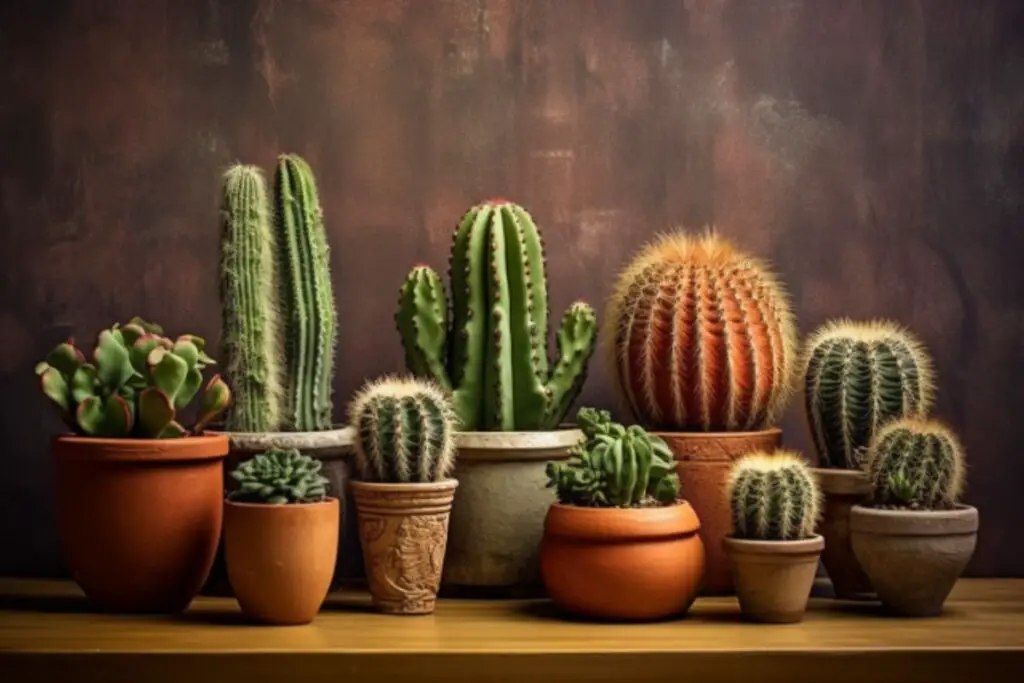
Growing cacti in pots is an art and a science, blending practicality with aesthetic appeal. Here’s how to make sure your potted cacti not only survive but thrive:
- Choosing the Right Pot: The pot size and material matter a lot. Go for a pot that’s just a bit larger than the cactus. Terracotta pots are great for their breathability, helping soil dry evenly.
- Soil Selection: Use a cactus-specific potting mix or create your own with a blend of regular potting soil, sand, and perlite or pumice for good drainage.
- Sunlight and Placement: Cacti love the sun. Place them where they can bask in plenty of bright, indirect sunlight, like a south-facing window.
- Regular Check-ups: Keep an eye on your cactus. Over time, they might need a bit more room to grow, signaling it’s time for a slightly bigger pot.
Overwintering
Overwintering is a crucial aspect of cactus care, especially for those living in climates with cold winters. Here’s a simple guide to help you successfully overwinter your cacti:
- Understand Your Cactus’s Cold Tolerance: Different cacti have varying levels of cold tolerance. Research your specific species to understand the minimum temperatures it can withstand.
- Reduce Watering: As the growing season ends, gradually reduce watering. Cacti enter a dormant state in winter and require less water. Overwatering during this period can lead to root rot.
- Provide Adequate Light: If you’re bringing your cacti indoors, place them in a location where they can receive enough sunlight, such as near a south-facing window.
- Maintain Cool Temperatures: Keep your cacti in a cool, dry place. A temperature range of 45°F to 55°F is ideal for most cacti to properly enter dormancy.
Transplanting
Transplanting your cactus can be a bit of an adventure, especially considering those spiky defenses! Here are three easy steps to ensure a smooth transition for your prickly friend:
- Timing is Key: Spring is the ideal time for transplanting. This is when your cactus is gearing up for a growth spurt, making it more resilient to the stress of moving.
- Choosing the Right Home: Pick a pot that’s slightly larger than the current one, with good drainage. Remember, a happy cactus is one with room to grow, but not so much that it feels lost in space.
- The Move: Gently coax your cactus out of its old pot (gloves are a must!), check the roots for health, and settle it into its new abode with fresh, well-draining soil. A gentle watering will help it feel right at home.
Common Pests & Diseases
Cacti, though hardy, can still be susceptible to certain pests and diseases. Being aware of these common issues can help you keep your cacti healthy:
- Mealybugs: These small, white, cottony pests are often found in the crevices of cactus plants. They suck the sap from the cactus, weakening it. Mealybugs can be treated with a cotton swab dipped in alcohol or insecticidal soap.
- Spider Mites: Tiny red or brown mites that create webbing on the cactus and cause yellowing of the plant. Increasing humidity and using miticides can help control them.
- Root Rot: This is often caused by overwatering and poor drainage. If you suspect root rot, remove the cactus from its pot, trim away any black or mushy roots, and repot in fresh, well-draining soil.
- Fungal Diseases: Fungal issues like cactus rust or mold can occur, especially in humid conditions. These are usually treated with fungicides and by improving air circulation around the plant.

